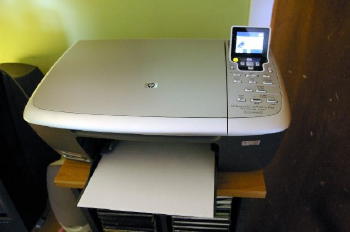-
- 13
Jun - (0)
Document Image Management
Boy…that sounds boring.
I suppose it could be for those not interested in the Electronic Health Record (EHR), and for those who are interested, innovations to what Document Management is, its value in treatment, and what it could mean in the future, this is a pretty good topic. Consumers and professionals need to be aware of the consumer’s record and how information becomes part of that record.

Recently I shared about Health Information Exchanges (HIEs) (see my last post). HIEs and Document Imaging can be viewed as two sides of the same coin. HIEs share data electronically without a document ever having to be printed, while Document Imaging is generally an electronic copy of a printed document.
John Mancini, president of the Association for Information and Image Management, has opinions about the insufficiencies of the EHR based on personal experience, as well as his own expert opinion. I love to take exception to an expert opinion, and still I’ve seen tremendous movement toward scanning outside documents into a consumer’s EHR. Most mental health and addictions treatment software manufacturers have or plan to have built in technology to include scanned documents from outside sources like labs and other professionals. They even interface to document imaging systems created for multiple departmental environments like hospitals. I imagine it is common enough for a private practice to rely on the paper chart, and certainly our industry hasn’t become fully acclimated to the EHR. Implementation of the EHR has, however been on the increase, and there’s a deadline. The commandment is for professionals to be operational on the EHR by 2014. Originally envisioned in the Bush era as a primary task that would be nothing but good for healthcare in the United States, this goal was reiterated by president Obama when he took office. Both Document Imaging and HIEs contribute to a consumer’s electronic record.
Along with document imaging capabilities, I commonly see software interfaces to labs and pharmacies required as part of the purchase of an EHR. Interfaces to electronically share data are big business, and can be expensive. Without stimulus funding in the form of Meaningful Use incentives, professional organizations in our industry can lag behind the requirement, simply because they can’t afford it. In our sector of healthcare, some professionals rely less on labs and pharmacies than others, so they may not have enough data volume to justify an interface…in some cases the cost outweighs the benefit. Other professionals may see the value in having the data on the computer, and can’t see that interfacing to these ancillary providers will even be used when they have a printed lab report that all the professionals in the organization are used to.
One thing is certain; searching for a paper document can slow down service for the consumer, and is where document imaging comes in handy.
In a computer, each consumer is assigned a number, and that number is likewise associated with the lab results and pharmacy orders or other document when scanned into the computer’s secure database.
If a consumer comes to a professional with a referral from another facility, or an existing consumer returns with a discharge summary after a stay in the hospital, the associated documentation can be electronically attached to the consumer’s record number, with a link or command button available in the consumer record that pops the lab results or list of currently filled medications to the screen.
My last post discussed how Health Information Exchanges (HIEs), which eliminate the need for a provider to scan and attach these types of data to the consumer’s record by making them available electronically: • Current demographics • Diagnosis treated • Services rendered • Medications prescribed • Admission and Discharge summaries
Whether or not professionals and the organizations they work for will profit from interfaces or HIEs to electronically share data, or be better able to justify a document imaging system, either as an added stand-alone system or one that’s built into their (EHR), is a decision that needs to be made with the consumer’s treatment experience in mind. It’s never a bad idea to chat with a consultant when it comes to determining the better value of multiple technological choices.
- 13

Leave a Reply